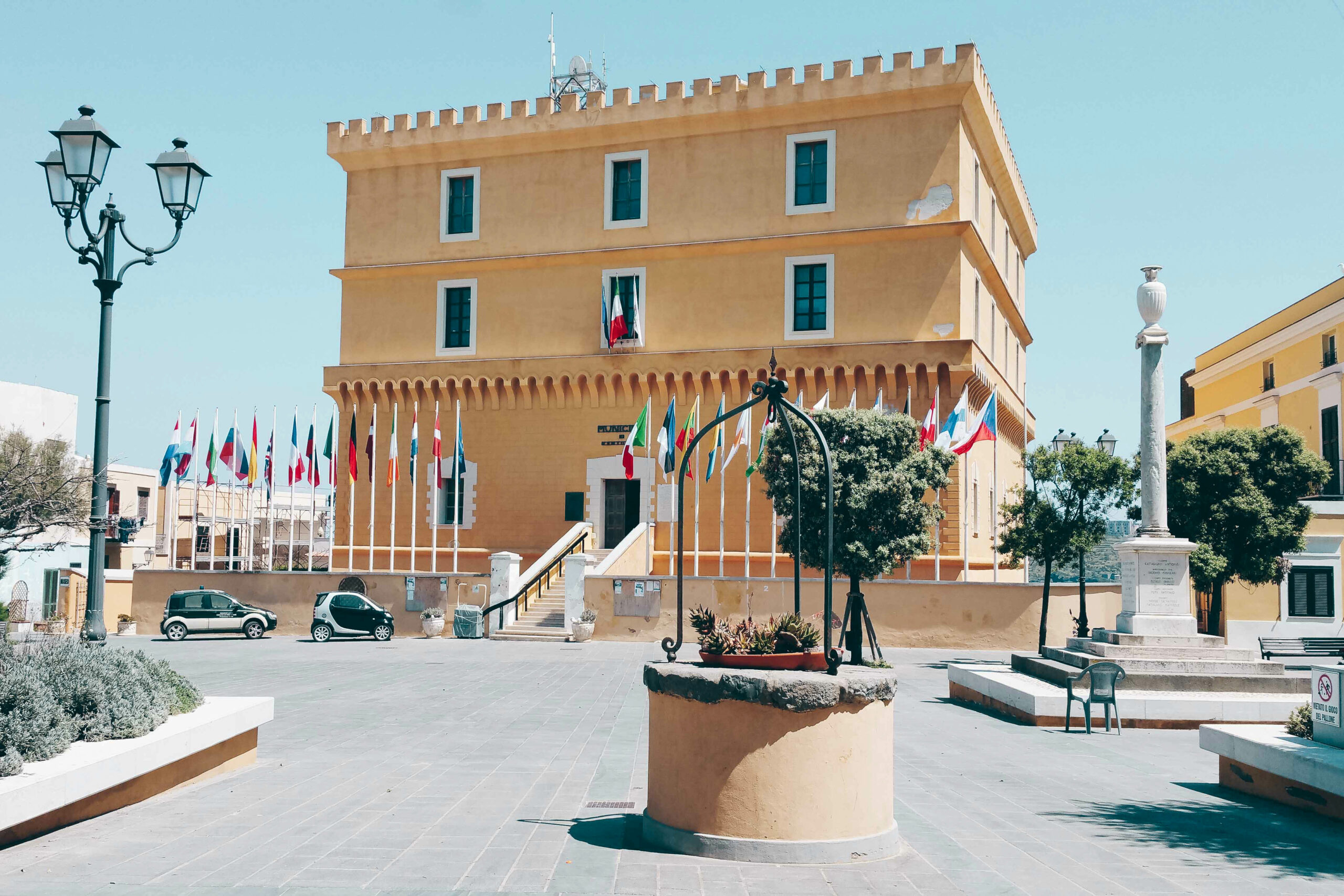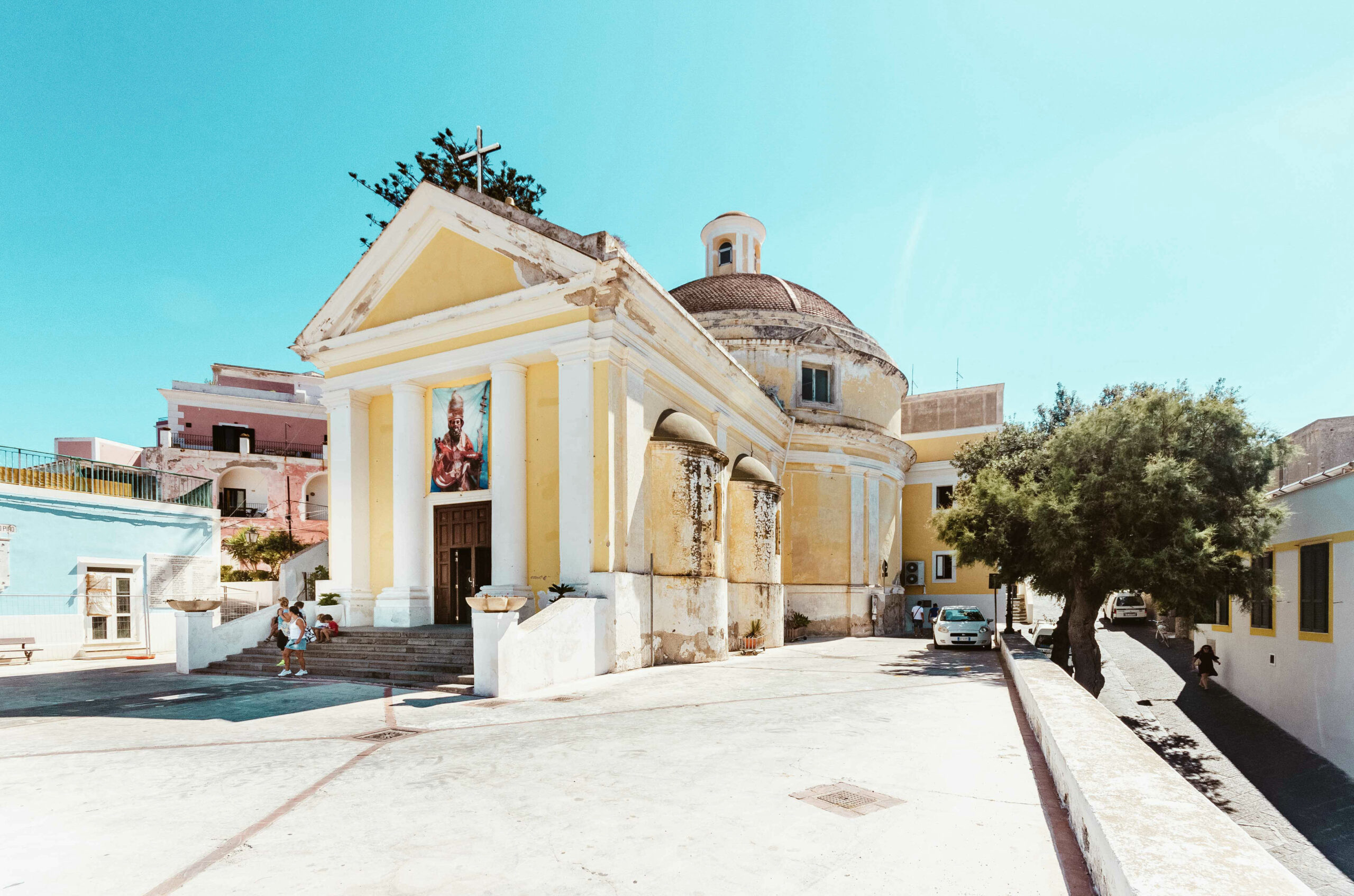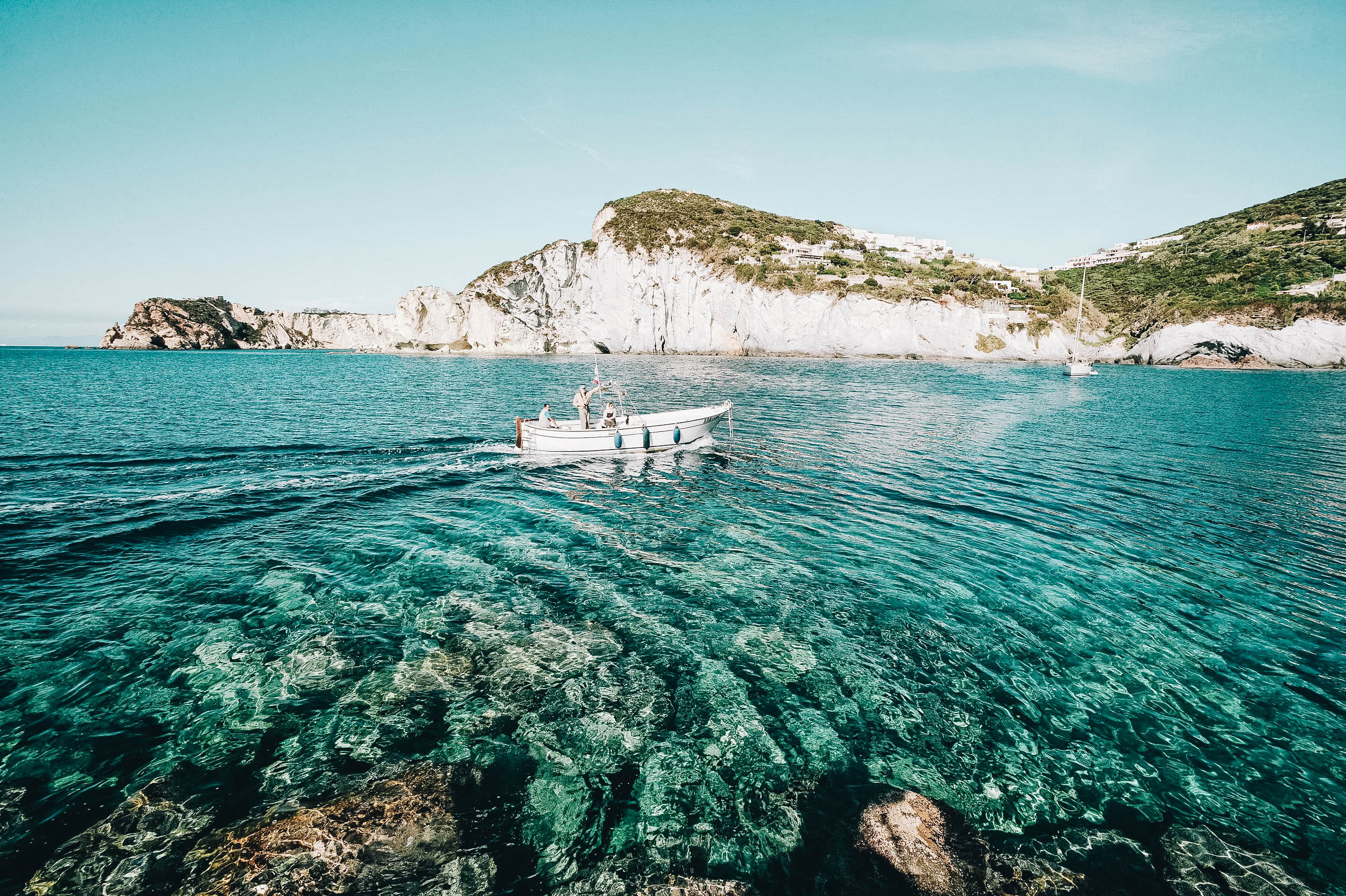In the year 2 B.C., Emperor Augustus exiled his allegedly treasonous daughter, Julia, to a tiny island off the coast of Lazio, Italy, in the Tyrrhenian Sea. His successor, Tiberius, banished Augustus’ granddaughter to the very same island. Other Roman noblewomen followed, spending their remaining days on this tiny rocky outcropping, nearly 80 miles off the coast of Rome.
While Ventotene, as the sleepy little island is now known, has a sordid past, it has become, along with its sister island of Ponza, a retreat for mainlanders seeking a respite from the hustle and bustle of city life. Today, the islands of the Pontine archipelago (which also includes Santo Stefano, Palmarola and Zannone) are sometimes wild, sometimes quiet but all secret jewels just waiting to be discovered.
From Punta Eolo, a promontory where the remains of the Roman villa that was once home to these exiled aristocrats still stands, the aquamarine sea is visible for miles around. Indeed, Ventotene’s waters boast an intense cobalt color, with emerald and turquoise undertones. The pristine marine reserve is a great starting point to exploring the island in a sedate, relaxed way. Divers from all over Europe head here to explore the undersea world. However, if you don’t want to view the seabed, grab a mask and snorkel to eye the wide variety of colorful fish. If swimming is not your strong suit, walk along the rocky coast to discover tiny crabs hiding in coves.

Just under two miles long, Ventotene is compact enough to explore by foot. Locals flock to Cala Rossana and Cala Nave beaches but a tour of the island by water offers a unique perspective. Take your boat to the nearby island of Santo Stefano, which, like Ventotene, has a lurid past with a prison to match. Dating back to the Bourbon era, with a unique horseshoe-shaped structure that allowed sentries to watch over inmates, the prison was active until 1965 and housed many political dissidents during the height of Italian fascism. Today you can admire it from both beaches on Ventotene—dotted with boats, it offers a truly unique panorama, especially at sunset.
If you’re traveling with children, let them frolic in the quiet, pastel-colored Piazza del Municipio. No cars are allowed here, so kids are safe rambling in the street, which gives you enough time to savor an aperitif at one of the many bars bordering the square. Come dinnertime, you’ll be spoiled for choice: Ventotene is proud of its myriad seafood options, which can be found at any restaurant on the island, as well as traditional dishes such as zuppa di lenticchie (lentil soup).


End your excursion with a walk along the harbor to the small lighthouse, which acts as an observation point to the outside world.
Fun Fact: Altiero Spinelli, an Italian political theorist and intellectual, wrote the Ventotene Manifesto, which is considered the treatise that birthed the European Union. The Ultima Spiaggia bookshop, in the main square, dedicates a section to Spinelli and features other works and stories about the island.
From Ventotene, hop on a ferry to Ponza, arguably the most famous of the Pontine islands. Compared to the spartan and traditional vibe of Ventotene, Ponza is more chic, a favored weekend escape among the Roman glitterati. Nothing beats the stunning view of the picturesque harbor as you arrive by water—a cove dotted with colorful houses lapped by the sea, a masterpiece of the Bourbon era.

Ponza is larger in size than its sister, with an indented coastline, inlets, bays, cliffs, coves and unspoiled beaches. The historic center is in the lower section of this volcanic island, bustling with charming alleyways, rustic shops (often nestled in prehistoric grottos) and sophisticated restaurants.
To discover Ponza’s wilder, more unspoiled soul, take the bus to the Le Forna district in the north of the island. Far from the madding crowd, Le Forna allows you to immerse yourself in nature and offers easy access to Ponza’s most pristine beaches, including Cala Feola and Cala Fonte.
Walk along the simple path that leads to the piscine naturali (natural pools). Set among white rocks, these volcanic inlets are home to crystal-clear waters. Rent a paddle boat to work your way from one inlet to another. In the afternoon, consider the Dragonara Roman cistern. This archaeological site boasts an ingenious example of Roman hydraulics that once collected rainwater for the island’s drinking and bathing needs.


At the end of the day, enjoy a breathtaking sunset lighting up the jagged coastline of Palmarola island just opposite of Ponza.
Palmarola is the most preserved and wildest island in the Pontine archipelago: there are no houses or ports, only caves that have been converted into wine cellars.
The Pontine islands are a true paradise and a week is enough time to detox and recharge. If you don’t have that much time and just want a taste, consider a one-day getaway departing from Rome.
However long you spend in the Pontine archipelago, you won’t regret even a moment of your summer here. But don’t forget to send us a postcard!

